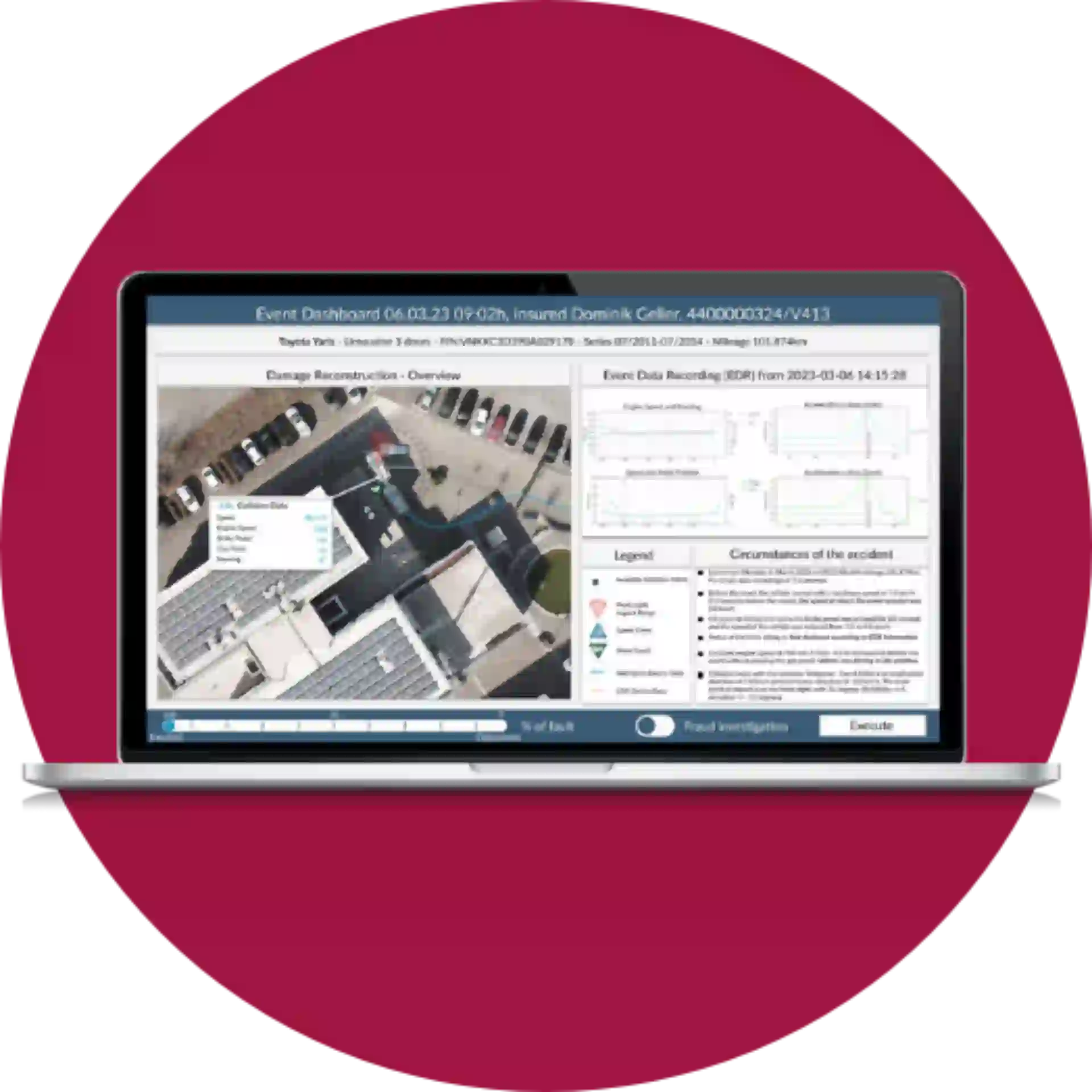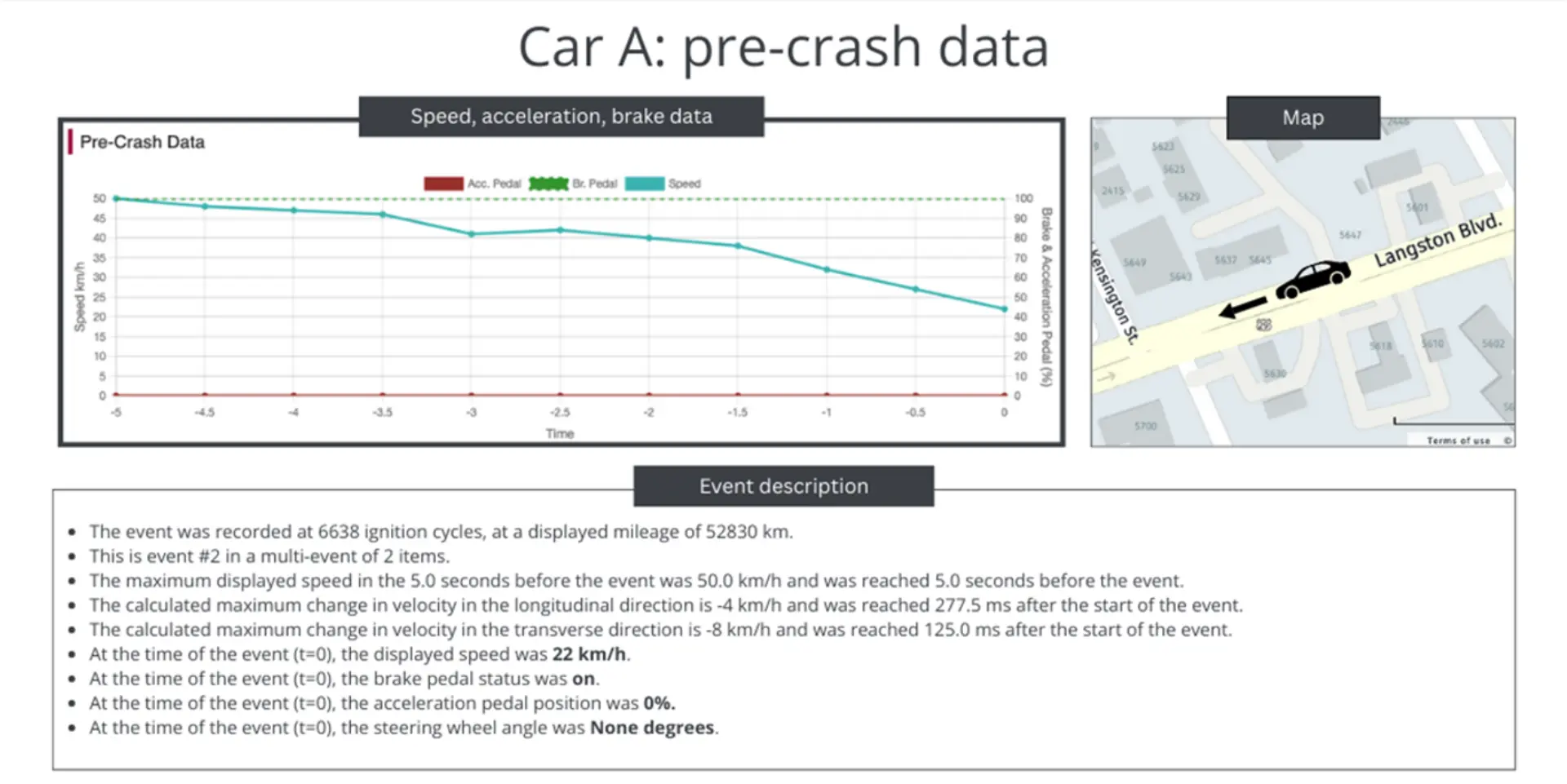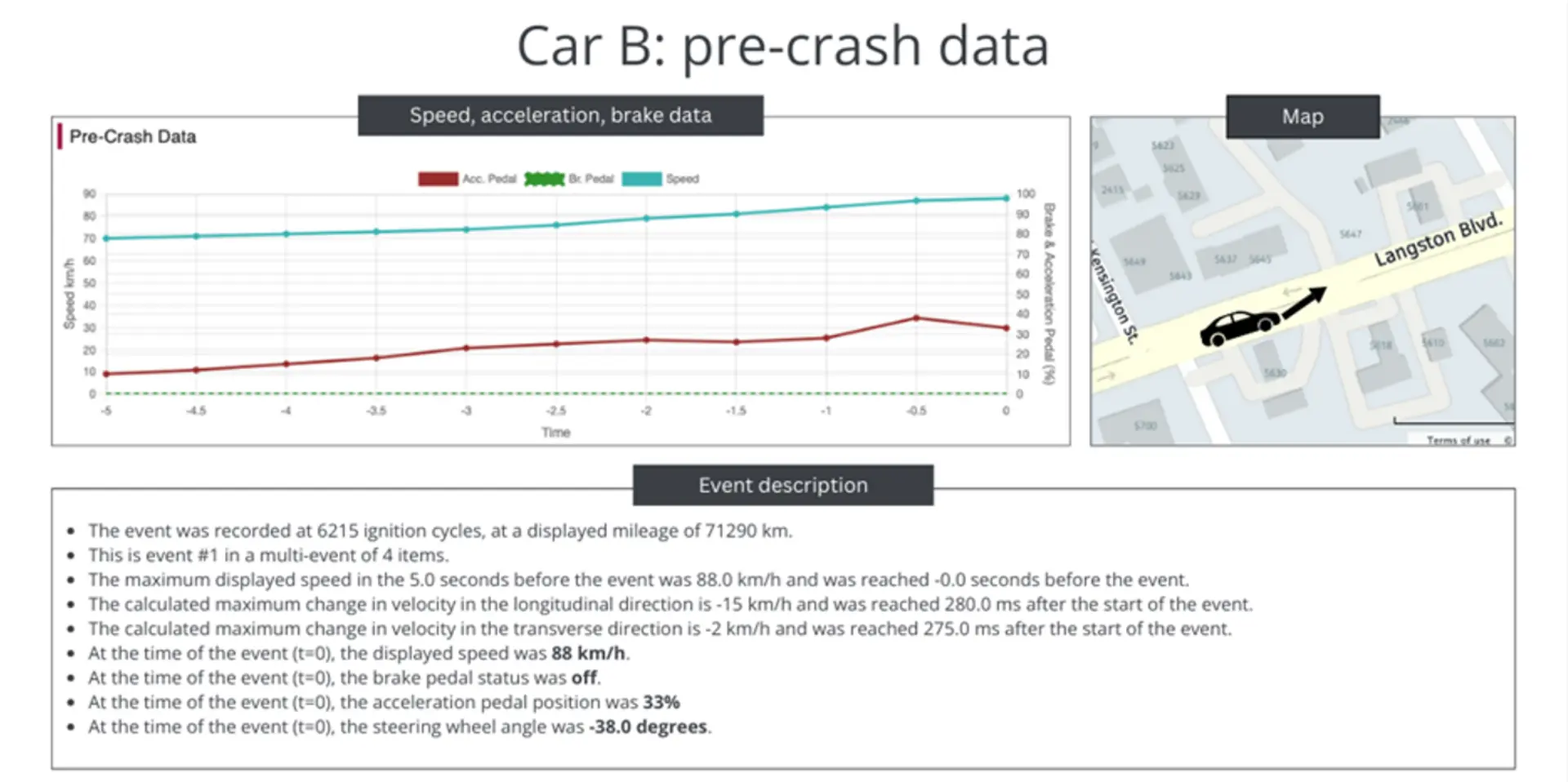
Rapid, easy crash data retrieval with with msg.EDR
Unlock accurate crash insights
Turn raw data into valuable insights with msg global’s Event Data Retrieval (msg.EDR). Used by insurers, police departments, leasing companies, and fleet managers, msg.EDR provides accident retrieval and analysis to reconstruct accidents, determine fault and indemnity, and detect fraud.

The challenge: retrieving car data
When a traffic accident occurs, insurers, police, and certifiers must quickly and accurately understand what happened to determine liability and process claims. But relying solely on vehicle damage and driver statements often leads to uncertainty and disputes. Clear, objective data is essential.
That’s where Event Data Recorders (EDRs) come in. Built into a vehicle’s Airbag Control Module (ACM), EDRs automatically capture critical information—such as speed, braking, and steering—in the five seconds leading up to a crash.
However, retrieving this data is not easy. And that’s where msg.EDR comes in.
Key benefits of msg.EDR:
- Immediate Access: Retrieve crash data within minutes.
- Accurate Reconstruction: Detailed event analysis pre- and post-collision.
- Fraud Detection: Identify false claims swiftly.
- Cost Efficiency: Pay-per-transaction model reduces expenses.
- Ease of Use: No specialist knowledge required.
Our solution msg.EDR
Our mission is to democratize EDR data access, enabling more accurate crash analysis and contributing to safer roads for everyone. That’s why, together with one of the leading accident forensics engineers in Germany, we developed msg Event Data Retrieval (msg.EDR).
Our EDR reader, DiagFlight, is designed to be simple, affordable, and broadly compatible. Compared to existing solutions, msg.EDR is easier to use, significantly more cost-effective, and works with the widest range of car brands. And adding more brands everyday!
- Audi
- Bentley
- BMW
- Cupra
- Dongfeng
- Hyundai
- KIA
- Lamborghini
- Mercedes-Benz
- Mini
- Porsche
- Rolls Royce
- Seat
- Skoda
- Tesla
- Volkswagen
How it works: plug in and retrieve data in a few minutes.
msg.EDR is a proprietary solution that combines hardware and software:
Easy as 1-2-3:
- Simply plug DiagFlight into the OBD port located under the driver’s seat console.
- DiagFlight will indicate steps conducted via voice output and on a display.
- Data is retrieved, processed, and harmonized on our platform and returned via email and is available in the client portal.
The whole process takes only a few minutes, and you can access data on our EDR portal at any time.
Use case: a practical example
Car A and Car B collided head-on. According to the drivers (who were thankfully not injured), both were going the speed limit and kept in their lane. Both cars were inspected for damage as part of the investigation, and based on the physical evidence alone, it is impossible to conclude who was at fault.
EDR data can provide additional details to shed light on the case, so the msg.EDR reader is used for both vehicles involved.
The EDR data from Car A shows it was traveling within the speed limit, braking before the accident, and the steering wheel was in the correct position to keep the lane.
From Car B, the EDR data retrieved shows it was traveling above the speed limit, accelerated before the crash, and the steering wheel position of –38.0 degrees indicated the car was invading the opposite lane.
Conclusion: Car B was at fault because it was speeding, didn't brake, and invaded the opposite lane.


Who can benefit from msg.EDR?
EDR data provides objective and reliable collision data, enabling insurers to quickly verify claims, determine fault and indemnity, and detect fraud.
Law enforcement / police can reconstruct accidents directly at the scene of the accident, and public prosecutors can prove violations of the law using tamper-proof driving data.
Rental companies can use EDR data to investigate damage claims and manage liability by having verifiable evidence of vehicle use during rental periods.
Certifiers can analyze EDR data to verify whether crash events occurred and to assess the conditions under which they happened—such as speed, braking, or airbag deployment—supporting more accurate vehicle certification and compliance audits.
Dealers can use EDR data to assess the true condition of a vehicle, detect hidden crash history, and provide transparency to buyers, enhancing trust and vehicle valuation accuracy.

